#Virtual Reality vs Augmented Reality
Explore tagged Tumblr posts
Text
Are you confused about the differences between Augmented Reality (AR), Virtual Reality (VR), and Mixed Reality (MR)? You’re not alone! These terms are often used interchangeably, but they represent distinct technologies that are shaping the way we interact with the world around us. At Simulanis Solutions, we’re excited to break it down for you!
#Difference Between AR#VR#MR#AR vs VR vs MR#Augmented Reality Definition#Virtual Reality vs Augmented Reality#Mixed Reality Solutions#What is Virtual Reality?#AR and VR Technologies#Mixed Reality Applications#VR vs MR vs AR Technologies#AR/VR/MR Differences#Virtual Reality Experience#AR for Business#VR Immersive Technology#Mixed Reality Development#AR/VR/MR Integration#Augmented Reality Devices#MR vs AR vs VR Use Cases#Immersive Reality Technologies#MR Applications in Industry#Comparing AR
0 notes
Text
https://expertsay.blog/the-transformative-power-of-virtual-reality-development/

#virtual reality#virtual reality training#enterprise virtual reality#the transformative power of stories#virtual reality for work#augmented reality#virtual reality business example#the future of virtual reality#learning and development#transformative role of technology#virtual reality advancement#what is virtual reality#applications of augmented reality#augmented reality vs virtual reality#virtual reality headset#virtual reality employee training
1 note
·
View note
Text
1 note
·
View note
Text
Augmented Reality in Construction |Benefits, Challenges, and Devices
Augmented reality (AR) enhances our real world by adding digital images, sounds, and text to our surroundings. Unlike virtual reality (VR), which immerses users in a purely digital environment. AR blends digital elements with the physical world, allowing interaction with both simultaneously. In this blog, we’ll explore what augmented reality means, a comparison of augmented reality vs virtual…
#AR#augmented reality for construction#augmented reality vs virtual reality#benefits of augmented reality#challenges of augmented reality#devices in augmented reality#Types of augmented reality#virtual reality
0 notes
Text
Virtual Reality Vs Augmented Reality Vs Mixed Reality
Virtual reality (VR), augmented reality (AR), and mixed reality (MR) are rapidly evolving technologies that are transforming various industries and changing the way we interact with the world around us. Understanding these technologies is becoming increasingly important as they continue to gain popularity and become more integrated into our daily lives. In this article, we will explore the…
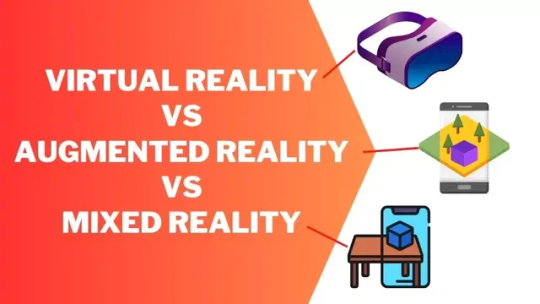
View On WordPress
0 notes
Text
Introduction to Augmented Reality and Virtual Reality
Augmented reality (AR) and virtual reality (VR) are two immersive technologies that are rapidly gaining popularity in a variety of industries, from gaming and entertainment to healthcare and education. But what exactly is the difference between AR and VR?. AR augments the real world with digital information, while VR creates a completely simulated environment. Both technologies have a variety of applications, but they are most commonly used in gaming and entertainment.
Visit us:
#Augmented Reality and Virtual Reality#ar and vr difference#AR vs VR#data visualization#app development#blockchain application development#ios app development
0 notes
Text
3 whumpy anime to check out this spring!

Go Go Loser Ranger is a heroes vs. villains anime where the villains are the good guys and the heroes are downright evil. Having wiped out all the powerful monsters more than a decade ago, the heroes keep the weakest monsters captive, to parade around and torment on a weekly basis while the public believes otherwise. Because they're immortal when hit with most weapons, they'll always reform to be hurt over and over again, despite feeling all the pain.
Footsoldier D is one of those weak monsters, an immortal shapeshifter made of dust, called a "duster". After escaping the heroes' arena, he forms a plan to kill the heroes and steal the few weapons they have that can permanently kill dusters, freeing the rest of his kind. Given that he has the constitution of a porcelain doll, he can't use strength to fight: he has to rely on wits, stealth, shapeshifting (despite knowing very little about humans or the outside world), and a shaky alliance with a double-agent ranger who seems to be taking advantage of him for her own gain.
Whump tags: villain whumpee, hero whumper, immortal whumpee
Watch it on Hulu, Disney+, or any unofficial anime site.
And if you don't have time to check out a whole anime, the Go Go Loser Ranger opening theme video is also really good, with fantastic visuals symbolizing D's struggles!

An Archdemon's Dilemma is a romantic comedy stuffed to the brim with popular whump tropes. Zagan is a demonic sorcerer who attends an auction for the possessions of another recently-killed sorcerer, when he sees that one of those "possessions" is an elf slave, Nephelia. Having had a destitute, harsh past himself, he feels a rush of sympathy and buys her way out, vowing to ensure her safety. However, Nephelia is terrified, believing she's about to be used as a sacrifice in a dark magic ritual. And unfortunately for both of them, Zagan is a socially awkward loser who sucks at communicating.
It's surreal seeing something that looks like it could be a caretaker-new-master whump fic as an actual, fully-realized anime. It definitely doesn't take itself too seriously despite the premise, leaning heavily on the "comedy" part of romantic comedy, and is mostly just a silly time with lots of whump-adjacent stuff thrown in. Fanfic-y to the point of "there's only one bed" being an actual line.
Whump tags: fantasy slavery (very pet-whump-esque in its tropes), caretaker new master
Watch it on Crunchyroll or any unofficial anime site.

The Grimm Variations is an anthology of horror retellings of several Brothers Grimm fairy tales. With each episode being written and directed by different people, it varies wildly in quality, with episodes ranging from laughably bad to incredibly good, but I'm here to talk about episode 2: Little Red Riding Hood.
The Little Red Riding Hood takes place in a dystopian future where the upper and middle class use virtual reality technology to augment their reality. One man, Grey, is tired of this and craves the real: specifically, the feeling of real blood spraying him as he murders countless women, his wealth and connections protecting him from consequences. But when this serial killer makes the mistake of targeting a woman called Scarlet, he finds himself on the other side of the knife. This episode is a complete and utter gorefest with multiple onscreen torture scenes.
This isn't even my favorite episode of the series, it's like my 3rd favorite. But episode 2 is the one with the gruesome torture scene, so it's the one that goes in this post.
Little Red Riding Hood whump tags: whumper-turned-whumpee, torture, gore
Little Red Riding Hood warnings: sexual assault, eye gore, fingernail gore, violence against women, major character death
Watch it on Netflix or any unofficial anime site. Orrrr if you just wanna watch the big torture scene without any of the context, it's on Youtube.
that's all I have for now :)
(P.S: Dungeon Meshi, while not really whumpy as a whole, is also currently airing and very very good and I might write whump fanfic for it at some point in the near future. Netflix or any unofficial anime site.)
80 notes
·
View notes
Text
Hologram Aquarium: Ocean Experience at Home or School
Bring lifelike ocean visuals into your surroundings with hologram aquariums. Explore their role in Hologram Museums and how Augmented Reality vs Virtual Reality adds new dimensions to storytelling, education, and digital exploration
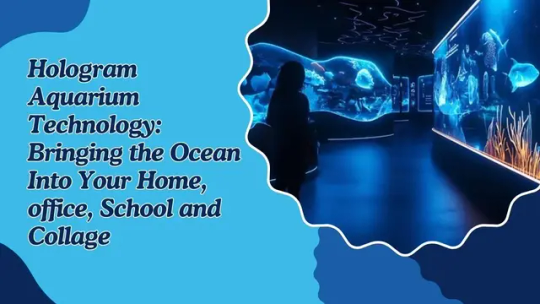
1 note
·
View note
Text
youtube
In 2054 Capitalism Dies in Space | In 20xx Scifi and Futurism by In 20xx Futurism When people in space are cut off from Earth an imbalance of owner vs. customers comes to a breaking point. The people in space believe no one is left alive on Earth. As far as they know, the (around) 12,000 in space is all that's left of humanity. Those living on and near the moon form Luna Nation. Space refugees scattered near Earth must find a way to insure a future for themselves and their children. AI that in many ways exceed human intelligence play a part in a skirmish for resources. What does it take to outsmart an AI that can make you think you're having a video call with a co-conspirator when it's the AI you are talking to? An finally, if AI can make a six part miniseries staring Drew Barrymore and Crispin Glover about using DNA banks to spawn a new human race, what parts would the two actors play? Here's a list of the technology mentioned in the story: 1. Orbital stations and space habitats 2. Micro-gravity adapting robots (e.g., vacuum bots) 3. Smart glass walls 4. Satellite cameras 5. AI assistants (e.g., Butler AI) 6. Augmented Reality (AR) glasses 7. Canal links (brain-computer interfaces) 8. Virtual Reality (VR) equipment 9. Life support systems for space 10. Automated mining and manufacturing in space 11. Fusion-powered spaceships 12. Electric thrusters for spacecraft 13. Legacy tracking systems for spacecraft 14. Ejection systems for spacecraft 15. Motion stabilizers for space suits 16. Emergency beacons in space suits 17. Artificial wombs 18. DNA banks 19. Brain scanning and digital copying technology 20. Robots capable of performing complex tasks 21. Centrifuges for simulating gravity 22. Terraforming technology (theoretical, for Venus) 23. Advanced medical automation 24. Custom cell cultivators 25. Organ printing technology 26. Stasis technology for long space journeys 27. Laser tight-beam communication 28. Rockets and missiles (mentioned as being disabled) 29. Closed-circuit TVs in spacecraft 30. Space construction vehicles (e.g., "spider") 31. Delivery cruisers 32. Research ships 33. Hologram-producing screens Many of the characters in this project appear in future episodes. Using storytelling to place you in a time period, this series takes you, year by year, into the future. If you like emerging tech, eco-tech, futurism, perma-culture, apocalyptic survival scenarios, and disruptive science, sit back and enjoy short stories that showcase my research into how the future may play out. This is Episode 56 of the podcast "In 20xx Scifi and Futurism." The companion site is https://in20xx.com where you can find a timeline of the future, descriptions of future development, and printed fiction. These are works of fiction. Characters and groups are made-up and influenced by current events but not reporting facts about people or groups in the real world. Copyright © Leon Horn 2024. All rights reserved. Episode link: https://ift.tt/k06LA7S (video made with https://ift.tt/pO3bjSh) via YouTube https://www.youtube.com/watch?v=7tFJVPfQw2k
#emerging tech#eco-tech#apocalypse#survival#disruptive#science#climate#future#short#solarpunk#post-apocalyptic#predictions#futurology#futurism#scifi#sci-fi#technology#tech#black mirror#Youtube
5 notes
·
View notes
Text
Are you an EdTech enthusiast? 🌟
Dive into our latest blog where we describe the difference between Augmented Reality (AR) and Virtual Reality (VR)! Discover how these cutting-edge technologies are revolutionizing industries by providing unique experience.
👉 Click the link to read more and expand your tech knowledge: https://fotonvr.com/ar-vs-vr/
#EdTech #ARvsVR #Technology #Education #Innovation
3 notes
·
View notes
Text
In recent years, immersive technologies like Virtual Reality (VR), Augmented Reality (AR), and Mixed Reality (MR) have gained massive attention, reshaping industries and changing the way we interact with the world around us. From gaming to education, healthcare, manufacturing, and retail, these technologies are driving innovation. If you’re looking to explore these technologies, Simulanis stands out as a leader in this space, offering cutting-edge solutions to businesses across various sectors. Let's dive into how Simulanis, a Virtual Reality Development Company in India, Augmented Reality Development Company in India, and Mixed Reality Development Company in India, is at the forefront of this technological revolution.
#Mixed Reality vs Virtual Reality vs Augmented Reality#Virtual Reality vs Augmented Reality vs Mixed Reality#VR vs AR vs MR#Mixed Reality vs Virtual Reality for Gaming#Mixed Reality vs Virtual Reality vs Augmented Reality in Education#AR vs VR vs MR for Business#Virtual Reality vs Augmented Reality vs Mixed Reality in Healthcare#Augmented Reality vs Mixed Reality vs Virtual Reality for Marketing#AR vs VR for Customer Engagement vs MR#Virtual Reality vs Augmented Reality vs Mixed Reality for Training#Mixed Reality vs Virtual Reality vs Augmented Reality for Simulation#Augmented Reality vs Mixed Reality vs Virtual Reality for Retail#Mixed Reality vs Augmented Reality vs Virtual Reality for Industrial Use#Virtual Reality vs Augmented Reality for Learning vs Mixed Reality#VR vs AR vs MR for Tourism#Virtual Reality vs Augmented Reality vs Mixed Reality in Manufacturing#Mixed Reality vs Augmented Reality vs Virtual Reality for Remote Collaboration#Virtual Reality vs Mixed Reality for Design vs AR#Augmented Reality vs Virtual Reality for Mental Health vs MR#Virtual Reality vs Augmented Reality in Entertainment vs Mixed Reality#Mixed Reality vs Virtual Reality for Architecture vs AR#Augmented Reality vs Mixed Reality vs Virtual Reality in Engineering#Virtual Reality vs Mixed Reality for 3D Visualization vs AR#Mixed Reality vs Virtual Reality for Real Estate vs AR#Virtual Reality vs Augmented Reality in Healthcare vs MR#Mixed Reality vs Augmented Reality vs Virtual Reality for Collaboration#AR vs VR vs MR in Sports Training#Virtual Reality vs Augmented Reality vs Mixed Reality in Education#Augmented Reality vs Mixed Reality for Training Simulations vs VR#Mixed Reality vs Augmented Reality vs Virtual Reality for Consumer Electronics
0 notes
Text

Dalam dinamika perkembangan inovasi digital saat ini, perbedaan VR dan AR menjadi salah satu topik yang banyak mendapat perhatian dari kalangan profesional dan pelaku bisnis.
Pemahaman mendalam tentang perbedaan tersebut menjadi penting untuk mengoptimalkan penerapan teknologi dalam berbagai sektor industri dan kehidupan sehari-hari.
Virtual Reality (Realitas Virtual) dan Augmented Reality (Realitas Tertambah) adalah dua teknologi revolusioner yang dapat mengubah bagaimana cara manusia berinteraksi dengan dunia.
#augmented reality#virtual reality#vr vs ar#perbedaan ar dan vr#jasa augmented reality#jasa virtual reality
0 notes
Text
Traditional Vs. Modern Language Teaching Materials
Traditional language teaching materials are like time-worn manuscripts, carrying the weight of history. Textbooks and chalkboards echo with the whispers of the past, embracing a sense of nostalgia. In contrast, modern materials are the sleek smartphones of education, interactive and dynamic. They dance with multimedia, embracing a symphony of visuals and sounds. It's a classic tale of parchment versus pixels, where the pen meets the touchscreen in the eternal saga of language learning.
Traditional Language Teaching Materials
Imagine a vibrant language classroom adorned with a linguistic tapestry – a giant word wall splashed with vivid verbs, nouns, and adjectives. Interactive language games come to life with magnetic poetry boards, fostering a dynamic atmosphere where students eagerly rearrange words to construct sentences. In the corner, a whimsical grammar garden blooms with colorful parts of speech, creating a visual symphony that transforms language learning into a lively, immersive experience.
Example of Traditional Language Teaching Materials:
1. Visual Aids:
A compelling visual aid for language learning is a vibrant, large-scale mind map prominently displayed in the classroom. This meticulously crafted visual organizes key language concepts, linking vocabulary themes, grammar rules, and cultural elements in a visually appealing and interconnected manner. Utilizing a spectrum of colors, it not only captures attention but also aids in categorizing and recalling information effectively. The central theme, perhaps the target language's core principles, serves as the focal point, with branching pathways guiding learners through related topics. This dynamic visual aid transforms abstract linguistic concepts into a tangible, accessible roadmap, fostering a more engaging and comprehensive learning experience for students.
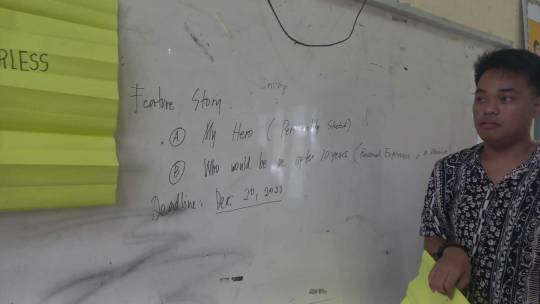
2. Flash Cards:
Flashcards are concise, portable learning tools featuring a word, phrase, or concept on one side and a corresponding image or definition on the other. Used in language teaching, they reinforce vocabulary, facilitate word-picture associations, and make memorization interactive and enjoyable.
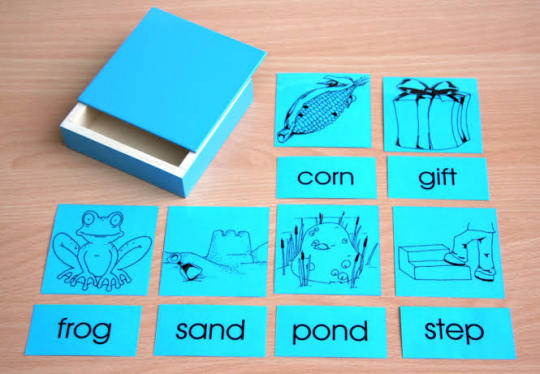
3. Mind Maps:
Mind maps are graphical representations that visually organize information around a central theme. In language education, they serve as dynamic tools for brainstorming, structuring ideas, and revealing relationships between words or concepts. Mind maps stimulate creative thinking and enhance memory retention by providing a holistic view of language elements.

4. Creative Learning Materials:
Creative learning materials encompass a variety of inventive resources designed to make language learning engaging and effective. These may include games, puzzles, role-playing activities, and hands-on projects. By integrating creativity into language education, these materials promote active participation and reinforce language skills in a lively and memorable way.
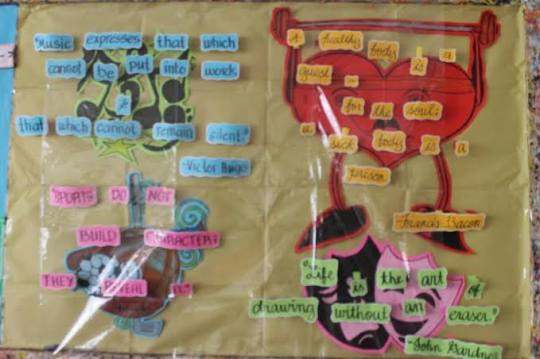
5. Story Boards:
Storyboards are sequential visual representations that break down a narrative into key scenes or events. In language teaching, storyboards facilitate storytelling and language production. Learners can use them to plan, illustrate, and present narratives, enhancing their linguistic abilities while fostering creativity and storytelling skills. Storyboards provide a structured framework for language learners to express themselves in a narrative format.

Modern Language Teaching Materials
Imagine a futuristic language learning experience where sleek, holographic language modules materialize in the air, seamlessly blending technology and education. These avant-garde materials use augmented reality to project interactive lessons, where students can virtually explore language landscapes, converse with lifelike avatars, and manipulate 3D linguistic constructs. Each module is a digital masterpiece, adapting to individual learning styles and dynamically responding to progress. Gamified challenges, real-world simulations, and AI-driven feedback transform language acquisition into an immersive adventure. This cutting-edge approach to language teaching materials not only embraces innovation but sparks a sense of curiosity and excitement, propelling learners into a technologically enriched linguistic journey.
Examples of Modern Language Teaching Materials:
1. Interactive Apps:
Cutting-edge language teaching materials often include interactive apps that engage learners through gamified exercises, real-life scenarios, and personalized feedback. These apps cater to various proficiency levels, offering dynamic content and adaptive learning paths, making language acquisition both enjoyable and effective.

2. Augmented Reality (AR) Flashcards:
Modern language teaching embraces AR flashcards that bring static images to life. By using a smartphone or tablet, learners can hover over these cards, triggering immersive experiences. For instance, pointing a device at a vocabulary card might generate 3D models, pronunciation guides, or interactive quizzes, enhancing the overall learning engagement.
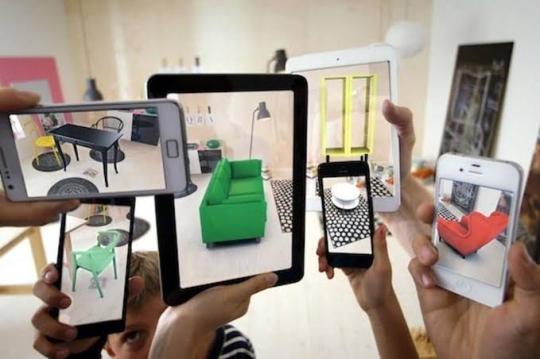
3. Online Simulations and Virtual Reality (VR):
Language teaching materials now leverage online simulations and VR experiences. These immersive environments enable learners to practice language skills in realistic scenarios, such as ordering food in a restaurant or navigating a foreign city. VR enhances cultural understanding and fosters practical language application.
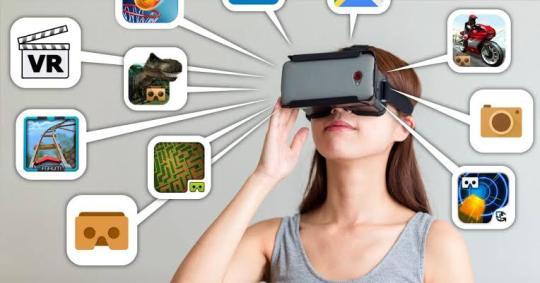
4. Authentic Multimedia Texts:
Contemporary language materials incorporate authentic multimedia texts like podcasts, vlogs, and news clips. These real-world examples expose learners to diverse accents, colloquial expressions, and current events, promoting cultural awareness and providing relevant context for language acquisition.
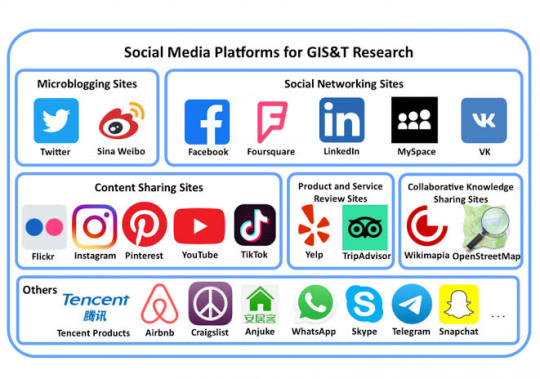
5. Digital Collaborative Platforms:
Language teaching materials often include digital collaborative platforms where students can engage in virtual language exchange, collaborative projects, and real-time communication. These platforms facilitate interaction with native speakers, peer collaboration, and authentic language use, breaking down geographical barriers and enriching the learning experience.

Advantages and Disadvantages of Traditional Language Teaching Materials
Traditional language teaching materials, such as textbooks and chalkboards, offer a structured foundation and can be cost-effective, but they may lack dynamism and struggle to capture students' attention in today's tech-savvy world. On the other hand, modern materials, like interactive apps and virtual reality simulations, bring language learning to life with immersive experiences, catering to diverse learning styles. These contemporary tools facilitate real-world language application, foster cultural understanding, and often provide immediate feedback. However, the reliance on technology can pose challenges, including access disparities and potential distractions. Striking a balance between the strengths of traditional and modern materials is crucial for creating a well-rounded language learning environment that combines the fundamentals of grammar and vocabulary with the engagement and authenticity offered by innovative technologies.
Advantages of Traditional Language Teaching Materials:
Tangible Resources:
Advantage: Physical textbooks, worksheets, and flashcards offer tangible resources that are easily accessible in various learning environments, providing a consistent reference point for students.
Cost-Effective:
Advantage: Traditional materials, such as printed textbooks, can be cost-effective compared to digital alternatives, making them accessible to a broader range of students.
Ease of Use:
Advantage: Traditional materials are often straightforward and easy to use, requiring minimal technical expertise. They are suitable for classrooms with limited access to technology.
Established Pedagogy:
Advantage: Many traditional materials are based on proven pedagogical principles, with structured lessons and exercises designed to support sequential language learning.
Minimal Technology Dependency:
Advantage: Traditional materials do not rely on technology, making them reliable in settings where technical resources may be limited or unreliable.
Disadvantages of Traditional Language Teaching Materials:
Limited Interactivity:
Disadvantage: Traditional materials may lack the interactive and dynamic features that modern learners, accustomed to digital engagement, find motivating and effective.
Static Content:
Disadvantage: Traditional materials often provide static content, which may become outdated or fail to capture the dynamic and evolving nature of language, especially in terms of current cultural references or idiomatic expressions.
Environmental Impact:
Disadvantage: The production and distribution of physical materials contribute to environmental concerns, such as deforestation and energy consumption. Digital alternatives are often considered more eco-friendly.
Limited Accessibility:
Disadvantage: Traditional materials may be less accessible for learners with diverse needs, such as those requiring adaptive technologies or alternative formats.
Less Engagement:
Disadvantage: Traditional materials might struggle to maintain the engagement of modern learners who are accustomed to interactive and multimedia-rich content, potentially leading to decreased interest and motivation.
Advantages of Modern Language Teaching Materials:
Engagement and Motivation:
Advantage: Modern materials, often utilizing technology and interactive elements, capture learners' interest and motivation, making language learning more enjoyable.
Real-life Context:
Advantage: Multimedia content like videos, podcasts, and virtual reality simulations provide authentic, real-life language contexts, aiding learners in understanding practical language usage.
Personalization:
Advantage: Many modern materials allow for personalized learning paths, catering to individual needs and adapting to different learning styles, pacing, and proficiency levels.
Accessibility:
Advantage: Digital materials and online platforms make language learning more accessible, allowing learners to engage anytime, anywhere, breaking down traditional barriers to education.
Interactive Feedback:
Advantage: Technology-enabled materials often provide instant and interactive feedback, helping learners correct pronunciation, grammar, and vocabulary in real-time.
Disadvantages of Modern Language Teaching Materials:
Dependency on Technology:
Disadvantage: Overreliance on technology can be a drawback, as not all learners may have access to the required devices or stable internet connections.
Lack of Personal Interaction:
Disadvantage: Some modern materials may prioritize individual learning over face-to-face interactions, potentially diminishing opportunities for authentic verbal communication and interpersonal skills development.
Cost and Accessibility:
Disadvantage: Advanced technology-based language materials can be costly, and not all educational institutions or learners may have the financial means to access them, creating disparities in educational resources.
Potential Distraction:
Disadvantage: Technology-integrated materials may introduce distractions, diverting learners' attention from the primary language learning objectives.
Technological Obsolescence:
Disadvantage: Rapid advancements in technology may lead to the obsolescence of certain language teaching materials, requiring continuous updates and investments to stay current.
2 notes
·
View notes
Text
Augmented Reality vs. Virtual Reality: Key Differences Explained
Are you curious about the future of digital interaction? With technology evolving at breathtaking speed, two terms keep sparking conversation—Augmented Reality (AR) and Virtual Reality (VR). These pioneering innovations are reshaping how we learn, shop, work, and play, but many people wonder: What’s the real difference between AR and VR? In this article, let’s break down what sets them apart, how they work, and where they’re headed, all in clear, simple language.
0 notes
Text
Augmented Reality vs. Virtual Reality: Key Differences Explained
Are you curious about the future of digital interaction? With technology evolving at breathtaking speed, two terms keep sparking conversation—Augmented Reality (AR) and Virtual Reality (VR). These pioneering innovations are reshaping how we learn, shop, work, and play, but many people wonder: What’s the real difference between AR and VR? In this article, let’s break down what sets them apart, how they work, and where they’re headed, all in clear, simple language.
#Tech#Technology#Gadgets#Innovation#Apple#Android#PC#Gaming#Software#Review#TechNews#BigTech#CyberSecurity#Startups#Tesla#SpaceX#FinTech#FreeSpeech#Nvidia#DataPrivacy#TechAesthetic#DeskSetup#PCGaming#MechanicalKeyboard#RetroTech#CustomPC#CozyGaming#WorkFromHome#iOS#WhatOnMyPhone
0 notes
Text
Mobile App Development in 2025: What Founders Need to Know Before Hiring a Team
In 2025, launching a successful mobile app isn’t just about hiring coders; it’s about making smart, high-leverage decisions before a single line of code is written.
Here’s why this matters now more than ever:
The mobile app market is projected to exceed $330 billion globally, but most apps fail due to poor strategy, wrong team choices, and a lack of scalability.
Cross-platform frameworks like Flutter and React Native can reduce development time and cost by up to 40%, but only if used correctly.
Regulations like GDPR and India’s DPDP Act can block your launch if you’re not compliant from day one.
Today’s users expect not just functionality, but AI-powered experiences, blazing-fast UX, and ethical data handling, or they’ll uninstall within minutes.
This blog serves as your blueprint, covering platform decisions, team structures, realistic budgeting, and avoiding compliance landmines. If you’re planning to hire a mobile app development team in 2025, you’ll walk away knowing exactly:
What tech stack to choose (native vs cross-platform)
Who to hire (freelancer, agency, or in-house team)
How much to budget (realistic 2025 numbers)
What compliance risks to avoid (App Store + data privacy)
The 2025 Landscape: Market Trends Shaping App Development
The mobile app development landscape in 2025 is defined by rapid technological advancements, evolving user expectations, and an increased focus on personalisation, security, and sustainability. Understanding these trends is crucial for founders looking to build competitive and user-centric applications.
1. AI-Powered Personalisation
Apps in 2025 are expected to be context-aware, hyper-personalised, and predictive, all powered by generative Artificial Intelligence (AI) and Machine Learning (ML). By analysing user behaviour, preferences, and interactions, AI enables the creation of personalised experiences that enhance user engagement and satisfaction. For instance, AI-driven fitness apps now offer customised workout plans, while e-commerce platforms provide product recommendations based on individual browsing history.
2. Progressive Web Apps (PWAs)
Progressive Web Apps are gaining traction as they combine the best features of web and native mobile applications. PWAs offer fast loading times, offline capabilities, and cross-platform compatibility, making them an attractive option for businesses aiming to reach a broader audience without the complexities of native app development.
3. Low-Code and No-Code Development
The emergence of low-code and no-code platforms is democratising app development. These platforms allow individuals with minimal coding experience to build functional applications, thereby accelerating the development process and reducing costs. Startups and small businesses are leveraging these tools to bring their ideas to life more efficiently.
4. Internet of Things (IoT) Integration
The integration of IoT with mobile applications is transforming user interactions with everyday devices. Smart home applications, wearable health monitors, and connected appliances are examples of how IoT is enhancing convenience and functionality. In 2025, the synergy between IoT and mobile apps is expected to deepen, offering users more control and automation in their daily lives.
5. 5G-Enabled Innovations
85% of users uninstall an app due to poor performance or a bad user experience (UX). The modern user expects 5G technology, instant load times, zero onboarding friction, and intuitive micro-interactions. Now, users want faster data transfer speeds and lower latency; apps can now support real-time features such as augmented reality (AR), virtual reality (VR), and seamless video streaming. Industries like gaming, healthcare, and IoT are leveraging 5G to deliver immersive and responsive user experiences.
6. Rise of Super Apps
Super apps, which consolidate multiple services into a single platform, are becoming increasingly popular. Inspired by platforms like Paytm, PhonePe, Cred, WeChat and Grab, businesses are developing super apps to enhance user retention and provide a seamless experience across various services, including messaging, payments, and e-commerce.
7. Blockchain for Enhanced Security
72% of users will uninstall an app over privacy concerns. GDPR, CCPA, and emerging AI ethics laws (such as the EU AI Act) mandate compliance. As data breaches and privacy concerns escalate, blockchain technology offers a solution to enhance app security. By providing decentralised and transparent systems, blockchain ensures secure transactions and protects user data. This is particularly pertinent in sectors such as finance and healthcare, where data integrity is crucial.
8. Focus on Sustainability
Environmental concerns are influencing app development practices. Developers are prioritising energy-efficient coding, optimising app performance to reduce battery consumption, and adopting sustainable practices to minimise the environmental impact. This trend aligns with the growing consumer preference for eco-friendly products and services.
Platform & Technology Decisions That Define Your App’s Future
One of the most high-stakes decisions in mobile app development is choosing the right tech stack. It directly impacts your product’s speed to market, performance, scalability, and cost.
Before you hire any team, you must answer three foundational questions: 1. Native or cross-platform? 2. Mobile app or web app? 3. What backend infrastructure will support scale, speed, and security?
Let’s break it down:
Native vs Cross-Platform Development
Native development uses platform-specific languages like Swift (for iOS) and Kotlin (for Android). It offers optimal performance, deep device integration, and a best-in-class UI/UX.
On the other hand, cross-platform development uses frameworks like Flutter and React Native, which let you build one codebase that runs on both iOS and Android, reducing cost and time.
Use native development when:
You need high-performance capabilities (gaming, AR, hardware-intensive apps).
You're building for one platform only (e.g., internal enterprise iOS app).
Use cross-platform app development when:
You want a rapid MVP launch across Android and iOS.
Your app is content-driven, UI-heavy, or relatively simple in device interactions.
Unless your product absolutely requires platform-specific features, cross-platform mobile application development is the smart default in 2025. React Native and Flutter now support near-native performance and are used in apps by Meta, Google, and Alibaba.
Web App vs. Mobile App
Founders often face a budget or strategy question: Should we build a mobile app or a web app first?
Web apps (especially Progressive Web Apps or PWAs) are faster to develop, work on all devices, and don’t require App Store approval. They’re great for initial launches or validating an idea.
Mobile apps, however, offer:
Offline functionality
Deeper user engagement via push notifications
Better performance
Access to native device features (camera, biometrics, GPS)
For most B2C startups, building a mobile application first, especially via Android app development, gives access to the world’s largest mobile user base.
Backend Infrastructure
Your backend decisions may not be visible to users, but they can make or break your product’s success. Here’s what matters most in app development today:
1. Cloud-native architecture
Use AWS, Google Cloud, or Azure to host, scale, and secure your backend.
Containerisation (Docker), orchestration (Kubernetes), and serverless functions are essential for modern scalability.
2. Scalability
Can your backend handle 10x user growth overnight?
Look for modular, event-driven architecture that supports horizontal scaling.
3. Security by design
Security is now a competitive advantage, not just a compliance box to check.
Ensure your team builds with encryption, authentication, secure APIs, and data privacy (GDPR/CCPA) in mind.
Now, before hiring a team, ask:
Do they have proven expertise in React Native, Flutter, Swift, or other relevant platforms?
Can they advise you on native vs. cross-platform based on your product needs?
Do they understand how to architect a secure, scalable backend using modern cloud solutions?
Can they guide you on the mobile app vs web app decision with market, user, and cost factors in mind?
What Kind of Team Do You Need?
Hiring the right people is the most critical decision you’ll make in the mobile app development journey. Whether you're building your first MVP or scaling to millions of users, the execution is only as strong as the team behind it.
So what’s the right setup for you—freelancer, in-house team, or agency?
Let’s break down the real-world pros, cons, and red flags.
Freelancers: Agile but High-Risk
Best for: Bootstrapped MVPs, early prototypes, or simple apps.
Pros:
Cost-effective
Flexible and fast for short-term or highly specific tasks
Easy to find on platforms like Upwork, Toptal, or GitHub communities
Cons:
Lack of accountability or long-term commitment
Limited to individual expertise (i.e., no built-in UI/UX, QA, or backend support)
Difficult to scale or manage across time zones
Red flags:
No clear contracts or IP handover terms
Poor communication or no use of version control (e.g., Git)
No prior app store deployment experience
Freelancers can work on isolated tasks, but for anything involving serious Android application development or a scalable mobile application development strategy, they require strong vetting and tight oversight.
In-House Team: High Control, High Commitment
Best for: Product-first startups planning long-term growth with proprietary tech.
Pros:
Full control over development
Cultural alignment and better collaboration
Long-term knowledge retention within your team
Cons:
High upfront hiring costs and salary overheads
Slower hiring cycles (especially for top-tier mobile engineers)
Difficult to scale quickly or pivot fast
Founders pursuing deep application development or wanting to own every piece of product IP may prefer this route, but only if you're ready to invest heavily in recruitment and retention. Also, for many early-stage founders, it’s not the most agile path.
Development Agency: Speed + Structure
Best for: Fast execution with full-stack capabilities, from MVP to scale.
Pros:
Access to a full team: product manager, developers, UI/UX, QA, DevOps
Faster time to market with structured workflows
Often more cost-efficient than building an in-house team
Cons:
Communication gaps, if not properly managed,
Some agencies rely on cookie-cutter or templated approaches
Misalignment risks if the product vision isn’t shared early
We’ve seen firsthand, having worked with both fast-growing startups and enterprise clients, that when agencies invest in strategy, not just execution, they become long-term partners rather than short-term vendors.
A high-quality agency doesn’t just code; they guide you through platform choices, app architecture, backend decisions, security compliance, and most importantly, user experience.
<Let Codeft Develop Mobile App>
Founders’ Decision Matrix

The wrong hire delays launches, drains budgets, and damages reputation. The right team becomes your competitive edge in the saturated mobile application development landscape.
Budgeting & Timelines
Let’s cut to the chase.
You’re not just budgeting for code. You’re budgeting for time-to-market, scalability, team efficiency, technical debt, and user retention. This section gives you a decision-maker’s lens to think about app development costs as investments tied to product outcomes.
The Real Cost of Building an App in 2025
“What does it take to get a working product in users’ hands?”

Factors that drive costs:
Number of features (authentication, payment, chat, etc.)
Platforms (Android app development only vs iOS + Android vs web + mobile)
Custom UI/UX vs template-based design
API integrations and third-party services
Use of AI, machine learning, or real-time capabilities
Founders’ insight: In mobile application development, cutting corners early often leads to technical debt that costs 2x–3x later to fix. The goal isn’t the cheapest build, it’s the most cost-efficient path to traction and feedback.
Timelines: How Long Does App Development Really Take?
Here’s a time-based view, broken into clear stages:

Cross-platform frameworks like Flutter and React Native reduce total development time by 30–40% for many apps, a major advantage for startups racing to market.
Founders often ask, “Can we launch faster?” Yes, but only if you limit scope ruthlessly and partner with a team that excels at lean execution.
Post-Launch Reality: Maintenance Isn’t Optional
This is where most first-time founders underestimate cost and effort.
Think of your app like a SaaS product or hardware; you’re not just building it, you’re maintaining it:
Recurring needs:
OS updates (Android & iOS updates every year)
Bug fixes & stability patches
Security updates (especially for fintech, health, and compliance-heavy products)
New feature additions driven by user feedback
Backend scalability as your user base grows
Budget 15–20% of your initial app development cost annually for maintenance and updates. For example, if you build an MVP for $80K, plan for ~ $12K —$16K per year in upkeep, and more if your growth is steep.
Founder’s Budgeting Framework
Here's a simple structure Codeft recommends to all early-stage product leaders:
60% - Core development (MVP or v1)
15% - UX/UI and user testing
15% - Maintenance and updates (12-month runway)
10% - Analytics, experimentation, and iteration budget
This helps ensure that you’re not just building, but also learning, adapting, and improving.
Legal, Privacy & Compliance
In mobile app development, legal compliance isn’t a side task; it’s baked into your product's DNA from day one. Whether you're building a fintech MVP, an AI-powered tool, or an Android application for consumers in India or Europe, privacy and platform compliance can define your app’s launch, growth, and survival.
Let’s cover the essentials every founder must account for in 2025:
Data Protection Is Not Optional Anymore
Global privacy laws are tightening, and your users, investors, and platforms expect you to comply.
Key regulations to know:
GDPR (Europe): User consent, data portability, the right to be forgotten
DPDP Act (India): Explicit consent for personal data, storage limitation, localisation requirements
CCPA/CPRA (California): Transparency in data usage, opt-out mechanisms, Do Not Sell rights
If your mobile application development involves collecting names, emails, locations, health data, or behavioural tracking, including analytics, these laws apply.
Key founder questions:
Are you getting informed user consent before collecting data?
Is your team encrypting data both in transit and at rest?
Can a user request deletion of their data, and can you fulfil that within 30 days?
Failure here doesn’t just mean fines. It can block your app from launching in major regions.
5.2 App Store & Google Play Policies: What You Can and Can’t Do
You could build the perfect app and still get rejected. Why? Because app store policies evolve fast.
In 2025, both Apple and Google are:
Cracking down on misleading monetisation (e.g., dark patterns in subscriptions)
Enforcing strict permissions (camera, location, microphone)
Requiring clear privacy policies and data usage disclosures
For Android app development, Google Play now flags apps that don’t meet “Data Safety” section standards, hurting trust and visibility.
Tips for founders:
Bake app store compliance into your early product roadmap, not post-launch
Include a legal & compliance checkpoint in your final QA phase
Ensure your team understands SDK and ad network policy changes (especially if monetising through ads)
5.3 Contracts, IP, and Ownership
This is where many startups lose long-term control.
If you’re hiring freelancers or an agency:
Ensure you retain 100% ownership of the source code, design files, and content
Use NDAs and work-for-hire agreements that are jurisdiction-specific
Have clear clauses around IP transfer, maintenance scope, and exit rights
In fast-paced app development, minor legal oversights can now turn into massive re-engineering costs later, especially during funding or acquisition due diligence.
Legal Readiness Checklist (For Founders)
Before launch, confirm you have:
User privacy policy and terms of service
GDPR/DPDP/CCPA compliance strategy
App Store and Play Store policy compliance check
Contracts covering IP ownership, NDAs, and data responsibilities
Consent management is built into the app flow
This isn’t about playing defence; it’s about protecting your product’s viability in global markets.
Conclusion
Let’s recap the most critical takeaways from this guide:
Tech Stack Strategy Cross-platform is now the default for most startups, unless you’re building a performance-critical or hardware-intensive product. Choose wisely.
Hire Like a Strategist Agencies provide speed and structure; in-house teams offer long-term control. Freelancers are best for narrow, tactical roles. Align your choice with your product goals.
Budget Realistically A quality MVP can cost $20K–$150K. However, remember that the real spending occurs after launch; updates, scalability, security, and user feedback loops must be factored into the budget.
Compliance Isn’t Optional Build privacy, security, and app store readiness into your roadmap from day one. Non-compliance is no longer a risk; it’s a launch blocker.
Think Beyond Launch Great apps aren’t just built, they’re maintained, iterated, and scaled. Don’t just fund the build. Fund the growth.
Final Word:
In 2025, mobile application development isn’t a technical project; it’s a strategic business move. The founders who win are those who understand the terrain before hiring the team.
If you remember one thing from this blog, let it be this:
Hire slow. Plan smart. Build lean. Scale fast.
That’s the real formula for mobile success this year.
#Mobile App Development#app development#custom app development#mobile application development#hyderabad#india#Codeft Digital
0 notes